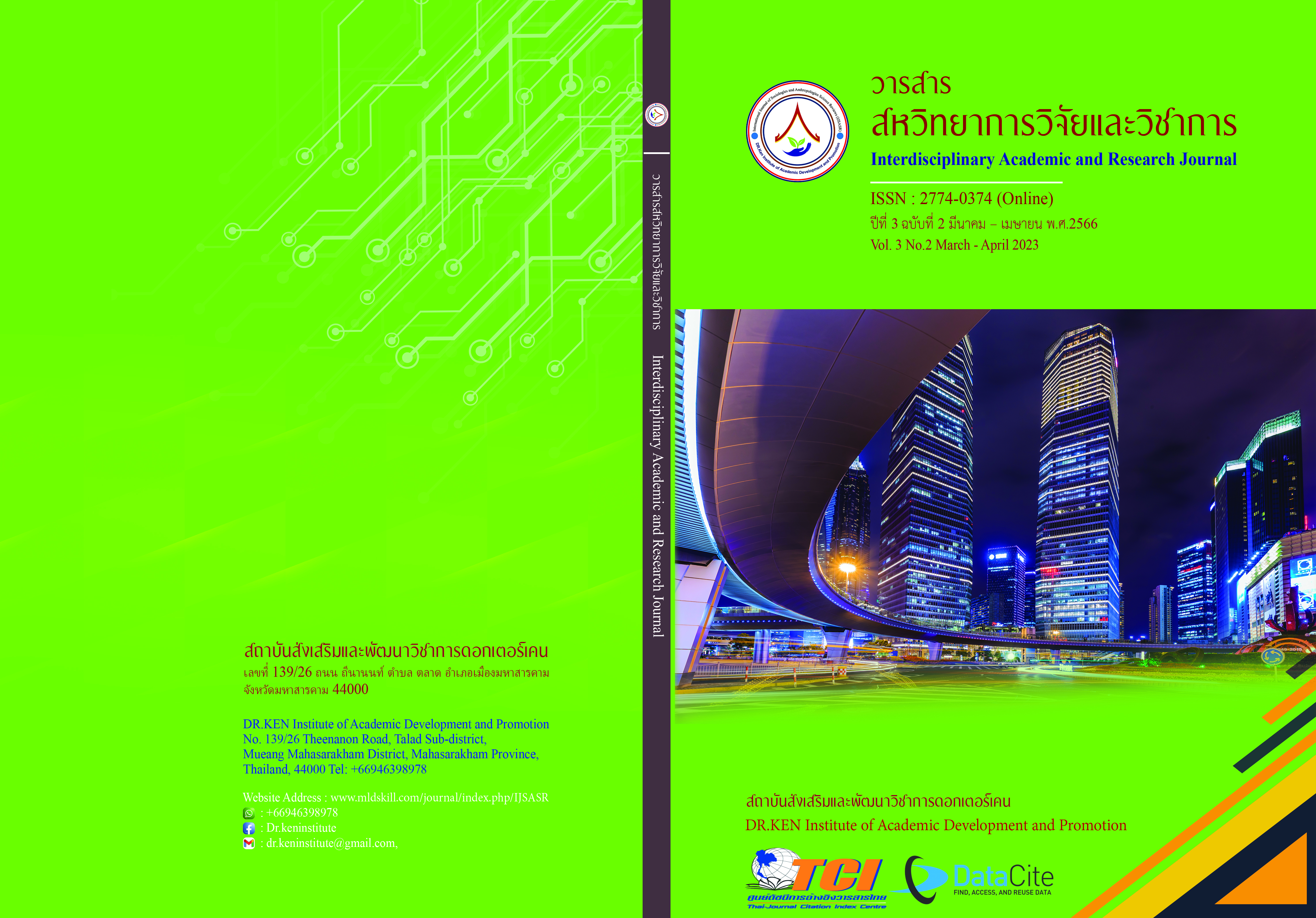Work Integrated Learning System Based on Threefold Training (Tri Sikkha) of Panyapiwat Learning Center - CPRAM
DOI:
https://doi.org/10.14456/iarj.2023.63Keywords:
Integrated Education Teaching System; , Threefold Principle; , Learning Center;, Panyapiwat;, CPRAMAbstract
The Threefold Training is the combination of the precepts. According to Buddhism, it has been described as a form and method of development in which honest behavior manifests itself through body, speech, and mind. It is about the practice of behavior, especially precepts, which is considered the starting point in the human development process. The objectives of this research were 1) to study the general condition of teaching and learning in the Integrated Education Teaching System according to the Principles of Panyapiwat Learning Center, CPRAM; 2) to study the factors affecting the system development. The teaching system of integrated education according to the threefold principle for Panyapiwat Learning Center, CPRAM, and 3) proposed an integrated teaching system according to the threefold principle for the Panyapiwat Learning Center, CPRAM. The researcher has proposed using a mixed method research plan (Mixed Methods Research), quantitative research The main target groups are teachers and students. Data were collected through in-depth interviews. Data were analyzed by descriptive statistics. Qualitative Research Division The sample is Key Informants The researcher conducted in-depth interviews with 25 key informants using purposive sampling. Data were collected through in-depth interviews. interview) and focus group discussion and descriptive data analysis. The results of the analysis of data from the questionnaire were presented step by step using lesson plans and tests. Data was collected from a sample of 132 people randomly selected by purposive sampling. It was found that. (1) The general condition of teaching and learning in the integrated education teaching system according to the threefold principle for the Panyapiwat Learning Center CPRAM found that the number of respondents of the Panyapiwat Learning Center-C. PRAM, a total of 132 people found that teaching and learning aimed at careers Including being aware of business operations with social responsibility. and environment and striving to become an organization that develops and grows along with creating value Create a better well-being of the people in the community. and caring for the environment to grow sustainably, 132 people (100 percent), followed by Aiming for sustainable development goals, 121 people (91.66 percent). (2) Factors affecting the development of the integrated education teaching system according to the threefold principle for the Panyapiwat Learning Center, CPRAM found that the factors were correct and good. which allows humans to communicate and relate to things externally through the five organs, i.e. eye, ear, nose, tongue, and body, with good (A) creating the factors of right view to arise first, namely (A1) good external factors (Paratoghosa), i.e. Good physical and social environment (A2) Practice thinking in the right way (Yonisomanasikara) (B) Precepts: It is about training concerning the material and social environment. (3) Presenting a teaching system of integrated education according to the threefold principle for Panyapiwat CPRAM Learning Center, it was found that the practice started from restraining the body, speech, and training the mind to concentrate, precepts, concentration, and wisdom, consisting of (A) inner freedom Paratokhosa Yonisomanasika, (B) External freedom Freedom arises from impermanent knowledge, (C) Identity, personal identity, and social identity, (D) Right view as the core, morality, concentration, wisdom, (E) Knowledge development, and (F) Government network private community.
References
ประหยัด พิมพา. (2561). การศึกษาไทยในปัจจุบัน. วารสารมหาวิทยาลัยมหามกุฏราชวิทยาลัย วิทยาเขตร้อยเอ็ด. 7 (1), 242-249.
พระธรรมปกฎ (ป.อ.ปยุตฺโต).(2539).พจนานุกรมพุทธศาสตร ฉบับประมวลธรรม. พิมพครั้งที่ 9. กรุงเทพฯ : โรงพิมพมหาจุฬาลงกรณราชวิทยาลัย.
พระไพศาล วิสาโล,(2558). สร้างสันติด้วยมือเรา.ศูนย์ศึกษาและพัฒนาสันติวิธี มหาวิทยาลัยมหิดล.
พิษณุ พรหมวาทย์ (2557). การพัฒนารูปแบบการเรียนการสอนกิจกรรมแนะแนวตามแนวคิดจิตตปัญญาศึกษาเพื่อพัฒนาความฉลาดทางอารมณ์ สำหรับนักเรียนชั้นมัธยมศึกษาปีที่ 3. วิทยานิพนธ์ครุศาสตรมหาบัณฑิต สาขาหลักสูตรและการสอน : มหาวิทยาลัยราชภัฏบ้านสมเด็จเจ้าพระยา
มนัส ศรีเพ็ญ.(2565). การปฏิรูปการศึกษาของประเทศไทย. Retrieved on December 10, 2022 from http://www.sammajivasil.net/news45.htm
มยุรี สายรัตน์. (2555). การพัฒนากิจกรรมการเรียนรู้ศิลปะตามแนวคิดจิตตปัญญาศึกษา. Retrieved on December 10, 2022 from: http://kruarinthon.blogspot.com
ศูนย์การเรียนปัญญาภิวัฒน์ ซีพีแรม. (2565). ข้อมูลบุคลากร. กรุงเทพฯ: ศูนย์การเรียนปัญญาภิวัฒน์ซีพีแรม.
สำนักงานคณะกรรมการการศึกษาแห่งชาติ (2543). ความเป็นเลิศทางการศึกษา : แนวนโยบายแห่งรัฐของสหราชอาณาจักร. กรุงเทพฯ: อมรินทร์พริ้นติ้งกรุ๊ฟ.
Downloads
Published
How to Cite
Issue
Section
License
Copyright (c) 2023 เดโช ปลื้มใจ, สมชัย ศรีนอก, สายรุ้ง บุปผาพันธ์

This work is licensed under a Creative Commons Attribution-NonCommercial-NoDerivatives 4.0 International License.
Copyright on any article in the Interdisciplinary Academic and Research Journal is retained by the author(s) under the under the Creative Commons Attribution-NonCommercial-NoDerivatives 4.0 International License. Permission to use text, content, images, etc. of publication. Any user to read, download, copy, distribute, print, search, or link to the full texts of articles, crawl them for indexing, pass them as data to software, or use them for any other lawful purpose. But do not use it for commercial use or with the intent to benefit any business.
















.png)


